Indications for ICD therapy
Raja Selvaraj, JIPMER
Sudden death
- About a 1000 people attending this conference
- One of us is likely to die suddenly in the next one year (1)
- Most likely to happen outside the hospital
- Rhythm is VF if recorded within 4 minutes (2)
- We could implant ICDs in everyone to prevent that death
- Or we could learn to identify those most likely to benefit
- Becker et al. Annals of Emergency Medicine 1993;22:86-91
- Hallstrom et al. Emerg Health Services
Sources
- ACC / AHA guidelines (2008, update 2012) (1, 2)
- ESC guidelines (2015) (3)
- Appropriate use criteria (2013) (4)
- Original studies
- Circulation 2008;117:e350-e40
- Circulation 2012;12
- Eur Heart J (2015) 36 (41): 2793-2867
- Heart Rhythm, Vol 10, No 4, April 2013:e11
Case 1
- Two patients and one ICD
- 40 M, Sustained VT, old MI, LVEF 35%, NYHA I
- 40 M, MI 1 yr back, LVEF 25%, NYHA I
- Who gets the ICD ?
Secondary prevention vs primary prevention
How much better is NNT ?
- 2 times (half)
- 3 times (third)
- 5 times
- 10 times
NNT in ICD trials
| Trial | Mortality(3yrs) | NNT(3yrs) |
|---|---|---|
| MADIT2 | 31 | 11 |
| SCD-HeFT (ICM) | 28 | 18 |
| SCD-HeFT (NICM) | 15.8 | 25 |
| MADIT | 42 | 4 |
| MUSTT | 35.4 | 5 |
| AVID | 35.9 | 9 |
| CIDS | 27 | 27 |
| CASH | 39 | 13 |
| Metaanalysis | 32 | 13 |
Betts et al. Absolute risk reduction in total mortality with implantable cardioverter defibrillators: analysis of primary and secondary prevention trial data to aid risk/benefit analysis. Europace 2013; 15 (6): 813-819
ACC guidelines
- LV dysfunction / prior MI / at least 40 days post-MI / LVEF less than or equal to 30% / NYHA functional Class I. (Class I Level of Evidence: A)
- Structural heart disease / spontaneous sustained VT / Hemodynamically stable or unstable. - (Class I Level of Evidence: B)
Case 2
- 36 male, AWMI
- VF on second day - defibrillated
- LVEF 30%
Family apprehensive, what would you do?
- ICD for secondary prevention?
- ICD for primary prevention?
Primary VF - No indication for ICD
- Related to reversible trigger
- Does not affect long term outcome
- ICD implant not indicated on this basis
Primary prevention?
- MADIT 2 requires 40 days post MI
- Early ICD implant not shown to be beneficial
ICD early post MI
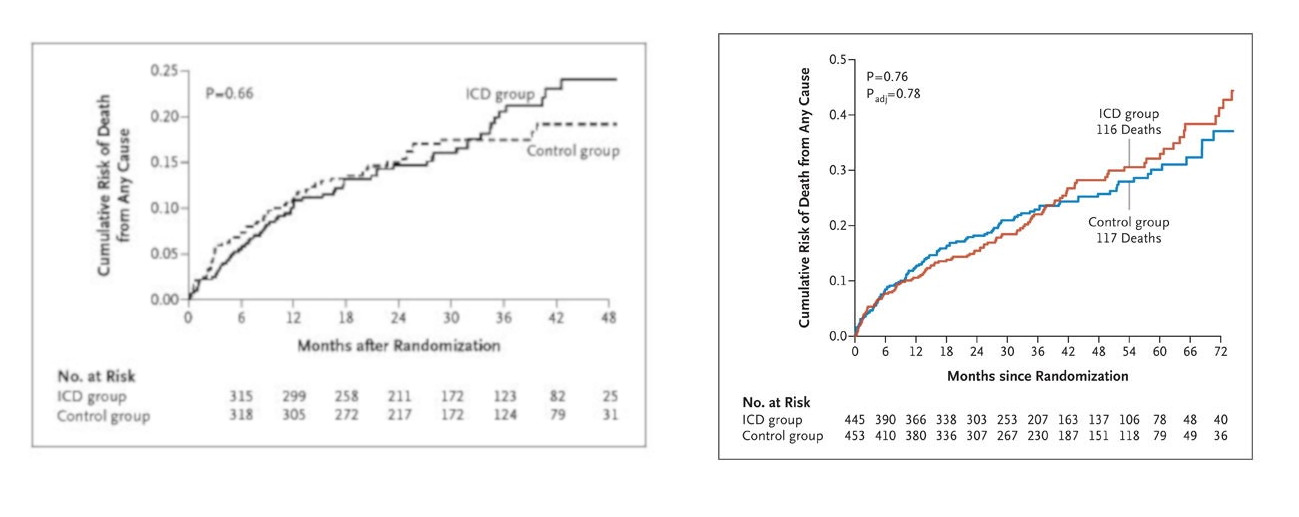
- Hohnloser et al. Prophylactic Use of an Implantable Cardioverter–Defibrillator after Acute Myocardial Infarction (DINAMIT) N Engl J Med 2004; 351:2481-2488
- Steinbeck et al. Defibrillator Implantation Early after Myocardial Infarction (IRIS) N Engl J Med 2009; 361:1427-1436
Outcome?
- What is his prognosis?
- What would you do
Not benign !
- AIVR - benign
- Primary VF - poor acute outcome
- But does not impact long term outcome
Fast MI registry - 5 year analysis of outcomes
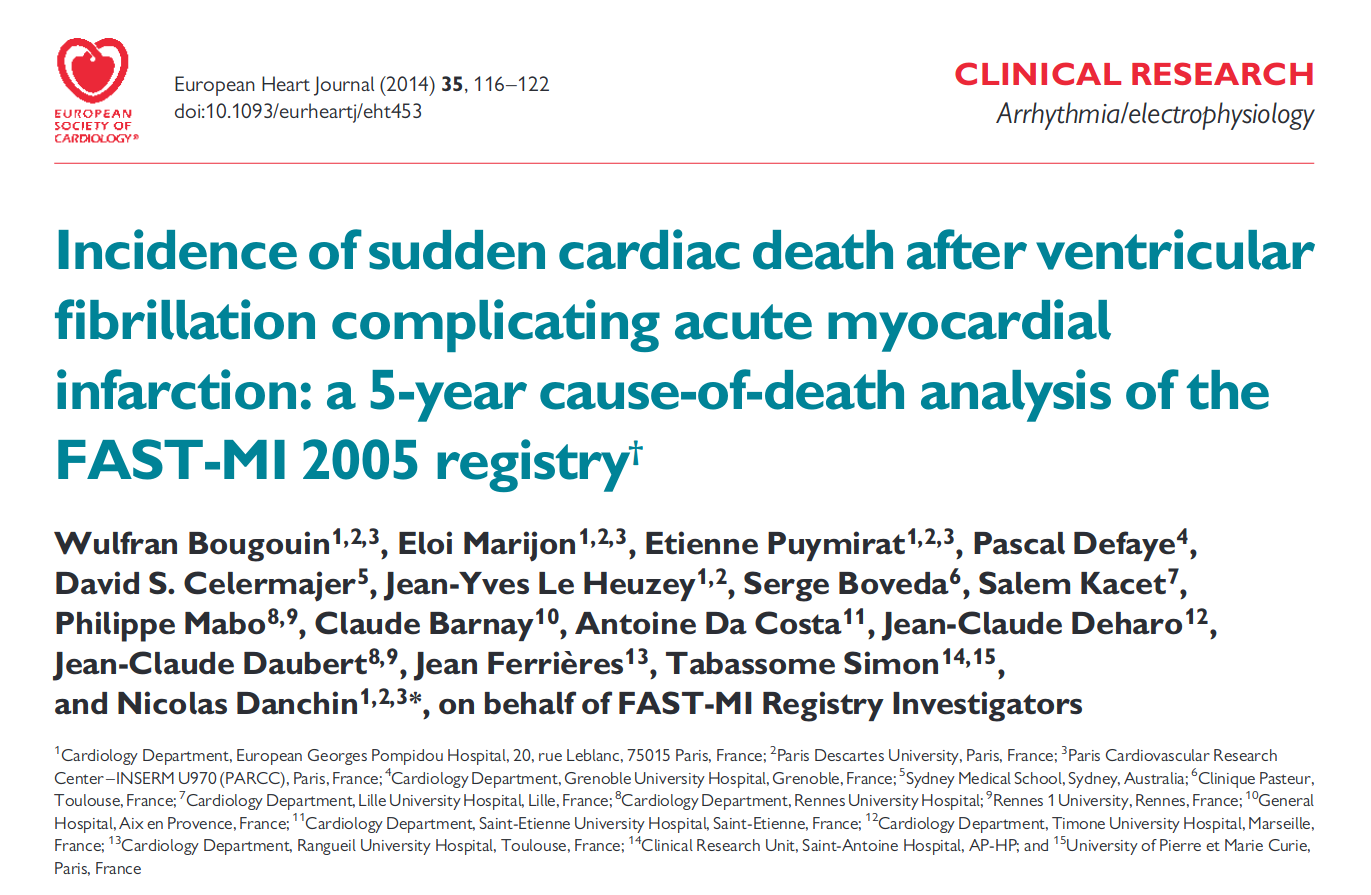
Higher early mortality
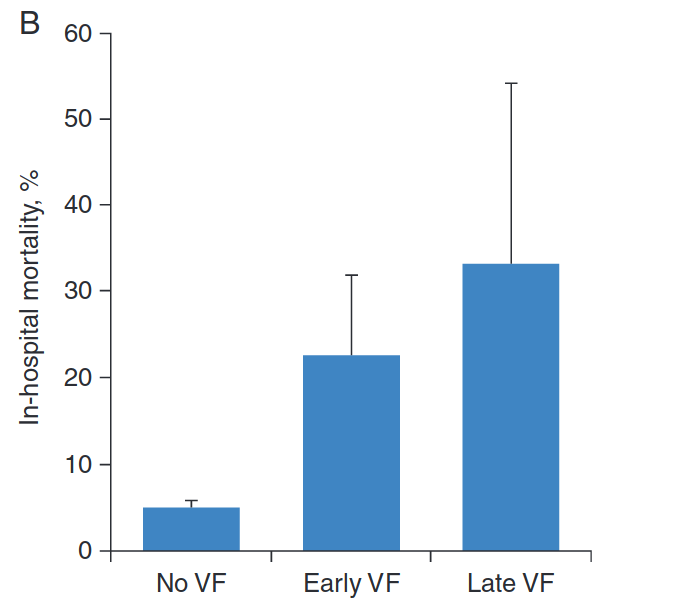
Long term outcome not affected
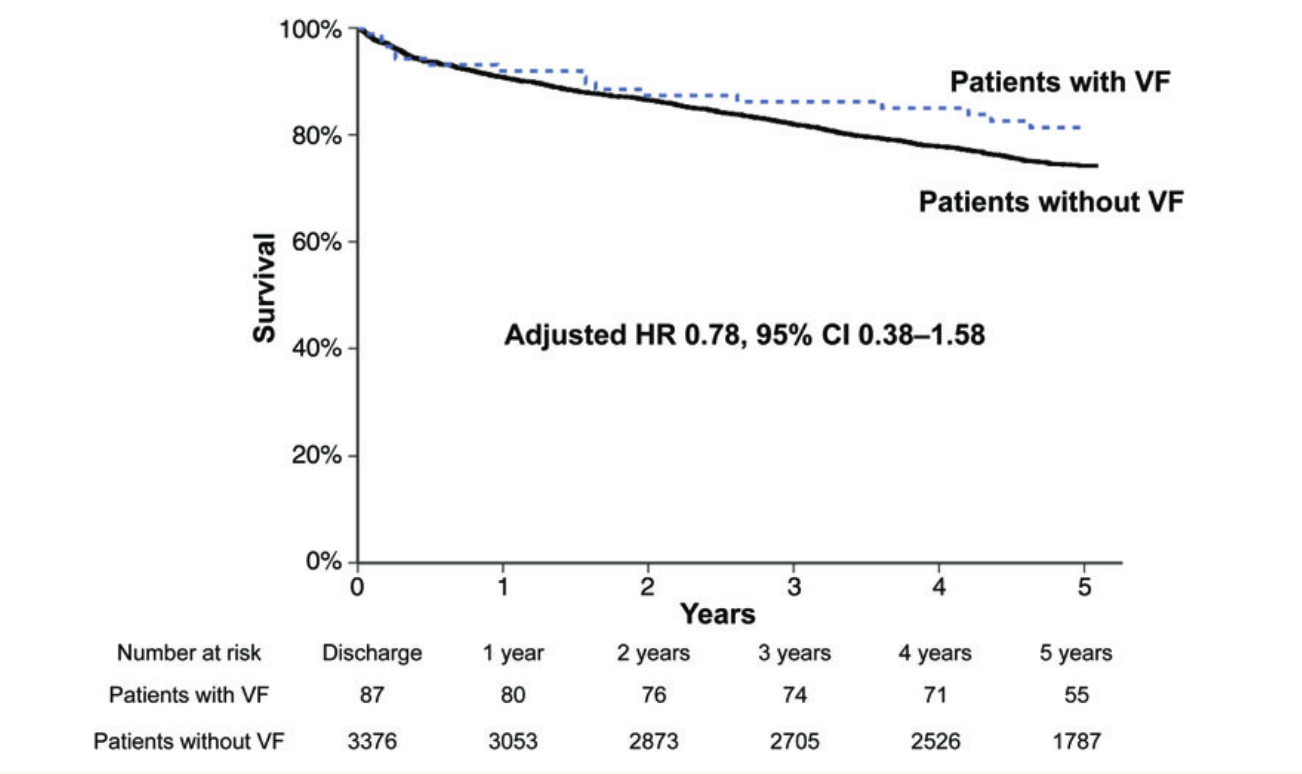
What would you do?
- Revascularization
- Beta blockers
- Early risk stratification ?
Appropriate use criteria for ICD implant
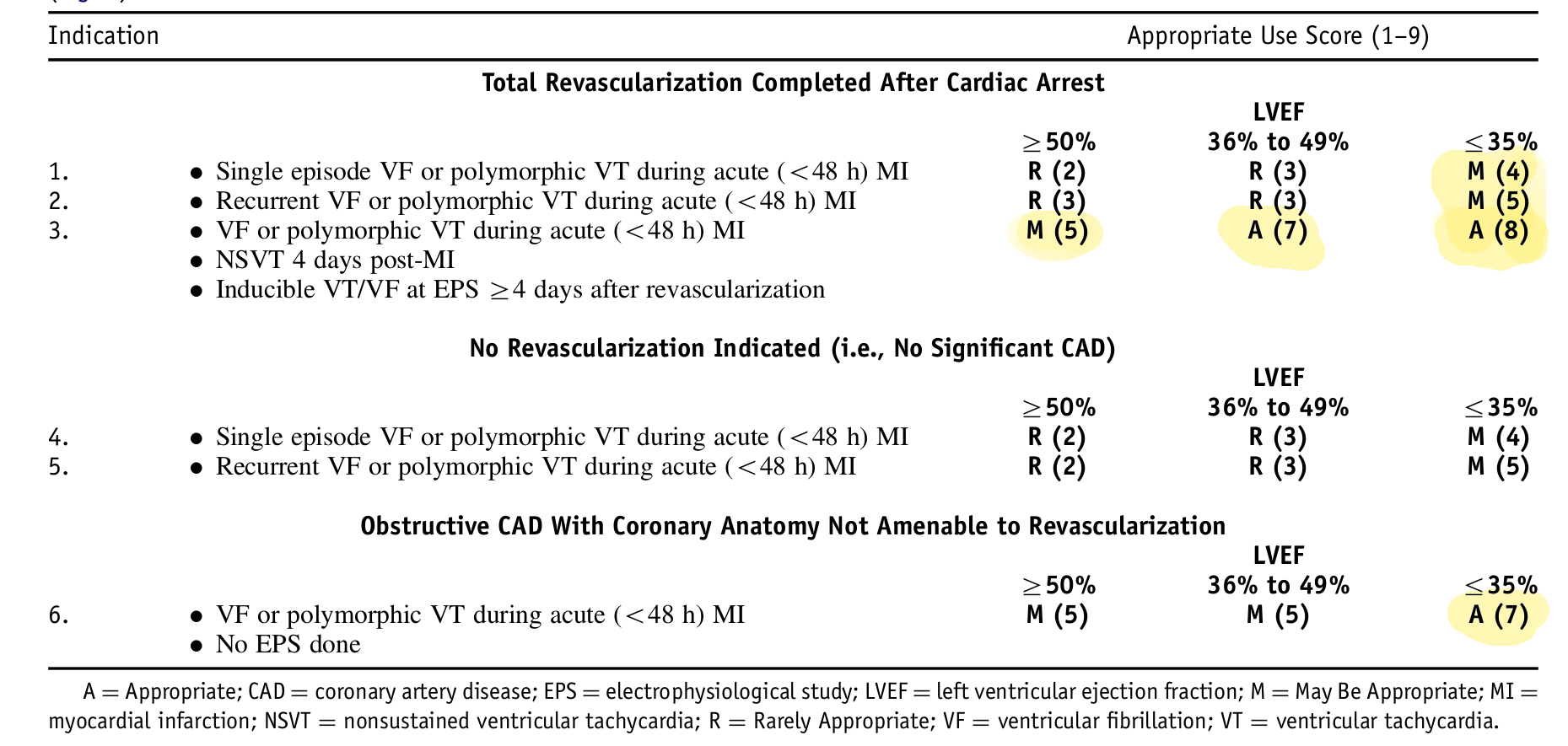
Wearable defibrillator
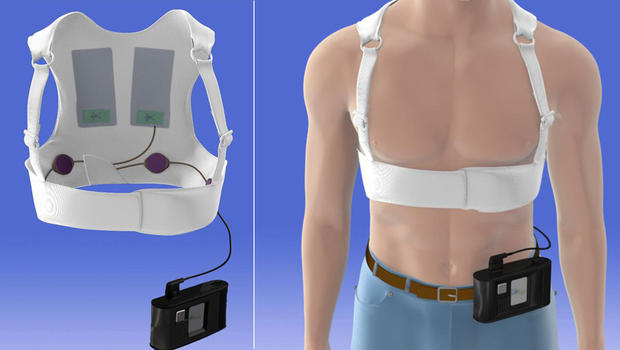
Case 3
- 75 year old male
- Old MI
- LVEF 30%, NYHA III
- Creat 2.2, BUN 45
- RBBB, QRSd 140 ms
- Persistent atrial fibrillation
ICD advised elsewhere
- ICD indicated as per guidelines
- Can you deny ICD because of age?
- What would you advise?
HF severity and benefit
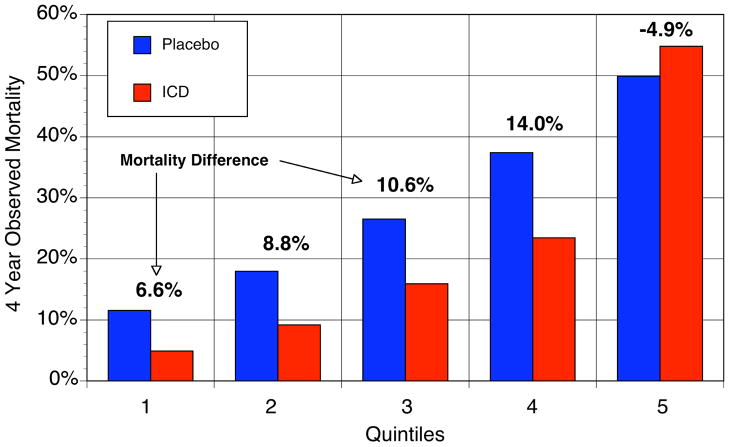
Levy et al. Circulation 2009;120:835-842
Other risk markers and U curve
Goldenberg - MADIT II
- Age > 70 yrs
- NYHA > II
- BUN > 26 mg/dl
- QRS d > 120 ms
- Atrial fibrillation
Goldenberg et al. JACC 2008;51:288-296
Other risk markers and U curve
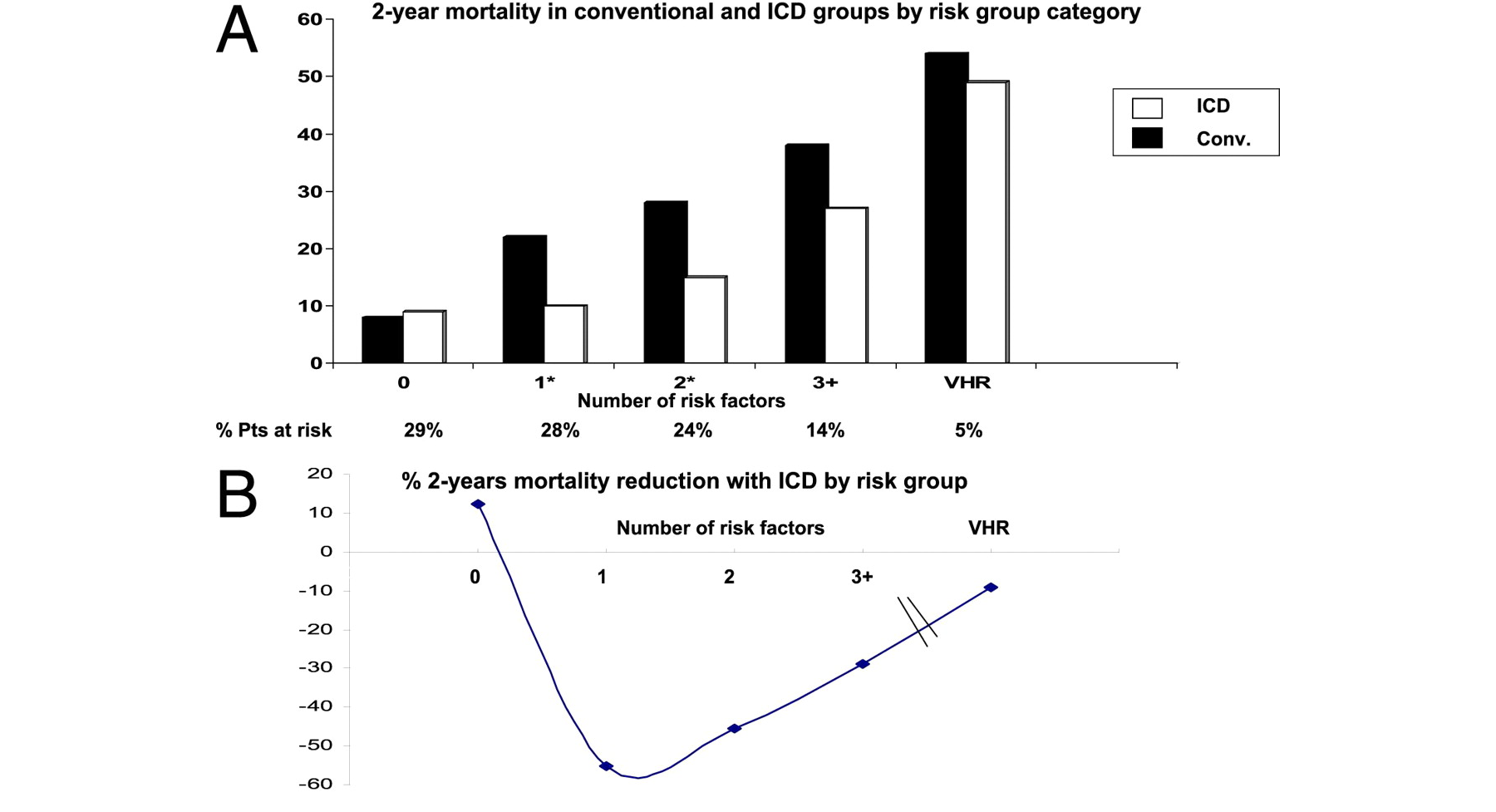
Seattle Heart Failure Model may be a better predictor
Application and comparison of the FADES, MADIT, and SHFM-D risk models for risk stratification of prophylactic implantable cardioverter-defibrillator treatment. Europace (2017) 19 (1): 72-80
Case 4
- 45 M
- Old AWMI
- LVEF 32%, NYHA II
- 20% PVCs, short NSVT on holter
- What would you advise
Is there an indication for ICD?
- LVEF < 30%, NYHA I (MADIT 2)
- LVEF < 35%, NYHA II-III (SCD-HeFT)
- EP study (MADIT / MUSTT)
- ICD implant ?
Ablation of PVCs
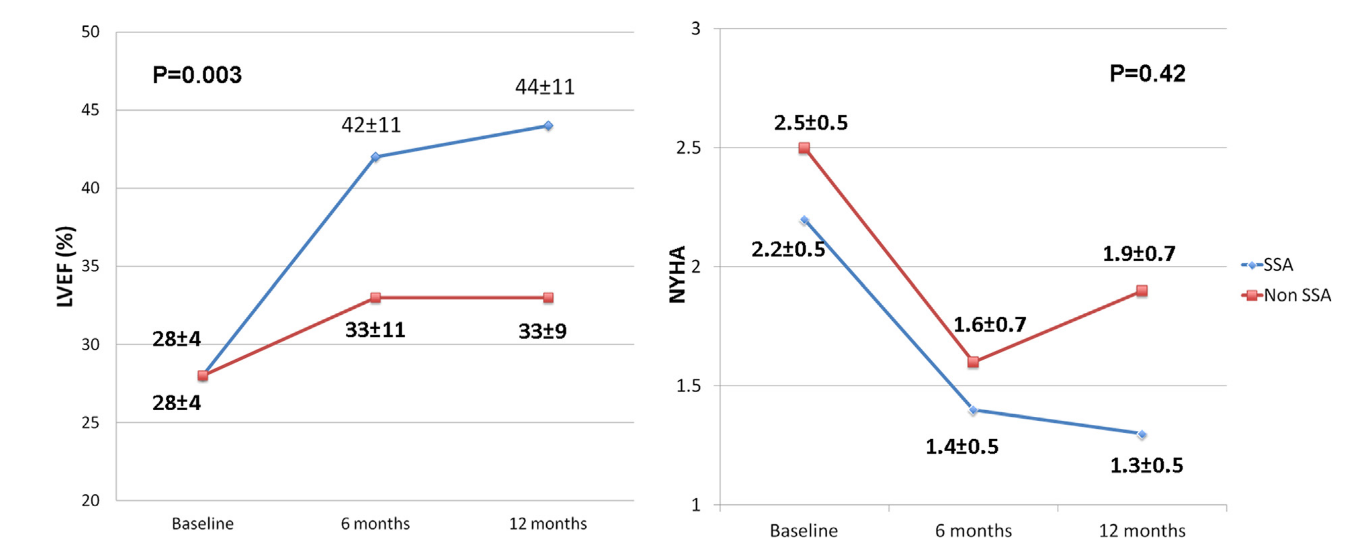
Ablation of frequent PVC in patients meeting criteria for primary prevention ICD implant: Safety of withholding the implant. Heart Rhythm 2015;12:2434–2442
May obviate need for ICD implant!
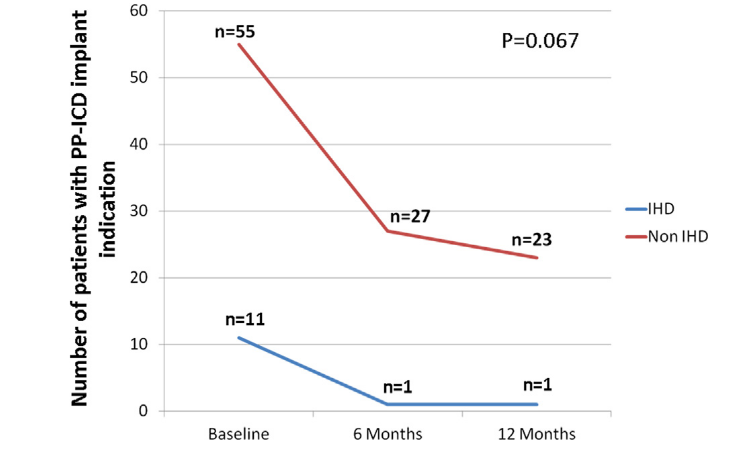
Case 5
- 28 year old male
- Recurrent syncope
ECG
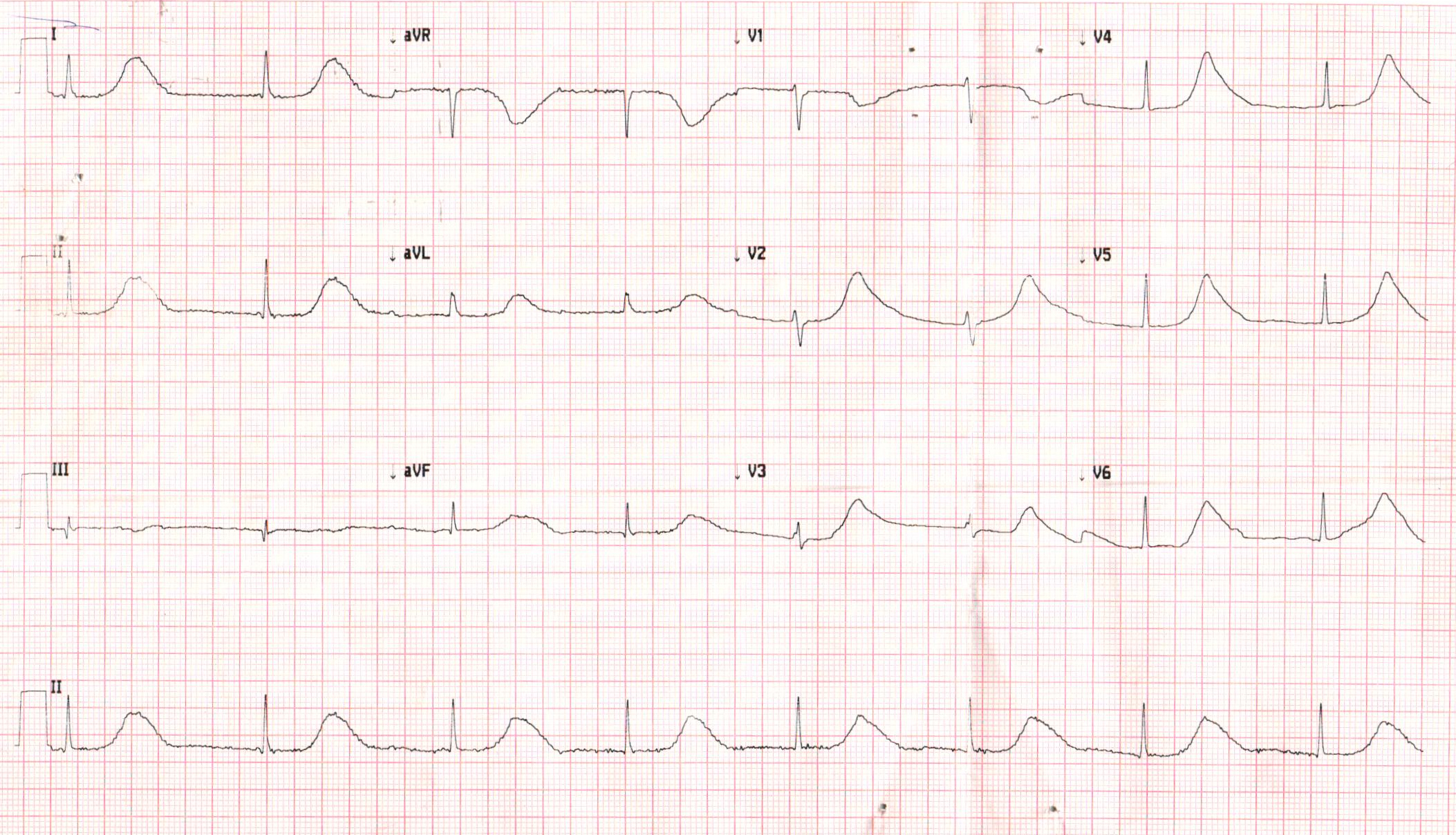
Management?
- Lifestyle modification
- Beta blockers
- Sympathectomy
- ICD implantation
ICD implant in LQTS
- Syncope or VT while receiving beta blockers (IIa)
- Doing well 4 years later, on high dose beta blockers
Conclusion - When not to implant an ICD
- Expected survival with good functional status < 1 yr
- Incessant VT / VF
- Drug refractory class IV failure, not candidate for CRT / transplant
- VT / VF amenable to ablation
- Arrhythmias due to completely reversible cause